When we think of the fruits in the world, we think of the bold variety of colors, tastes, and textures. However, there is one simple color that we rarely associate with being edible or appetizing, and that color is white fruits…
When you think of white fruit, what comes to mind? We rarely think of a watermelon or a strawberry because we associate those fruits with bold color and flavor. But… white about the pineberry and the white wonder watermelon.
Though frequently overlooked, white fruits offer just as much variety in their flavors and texture. Though lacking color, there are a host of fruits that are bursting with flavor and nutrients.
1. Pineberry
The pineberry fruit is characterized as a white strawberry. Similar in shape and texture, what distinguishes a pineberry fruit from a strawberry fruit is its unique white skin with distinct red seeds.
The pineberry also differs in taste as it is said to taste somewhat like a pineapple, hence the name pineberry.
The pineberry is classified as a hybrid fruit that stands to be a cross between the South American strawberry and the North American strawberry. Though a hybrid fruit, the pineberry is a result of cross-breeding and hasn’t been genetically modified.
Unlike strawberries, pineberries are not widely cultivated. They tend to be produced on a small scale and can commonly be found in Europe.
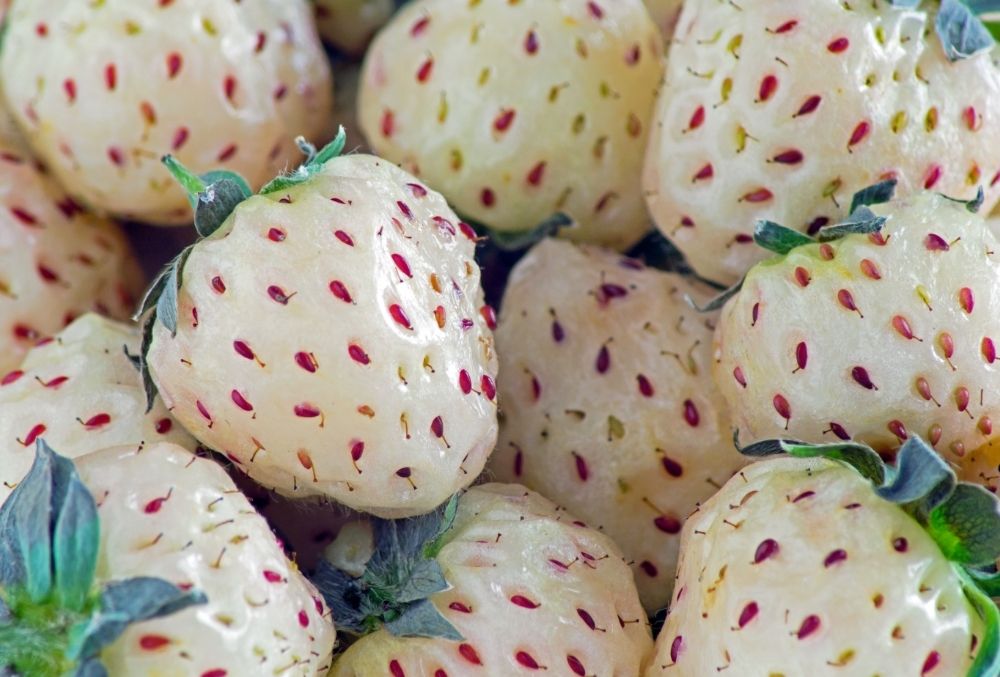
2. Cherimoya
The cherimoya fruit comes from the cherimoya plant that is scientifically known as Annona. The cherimoya fruit is closely related to the soursop.
The cherimoya fruit thrives in tropical and subtropical climates. It is a fruit that can commonly be found across the world in several regions including America, Asia, Australia, Africa, and the Mediterranean.
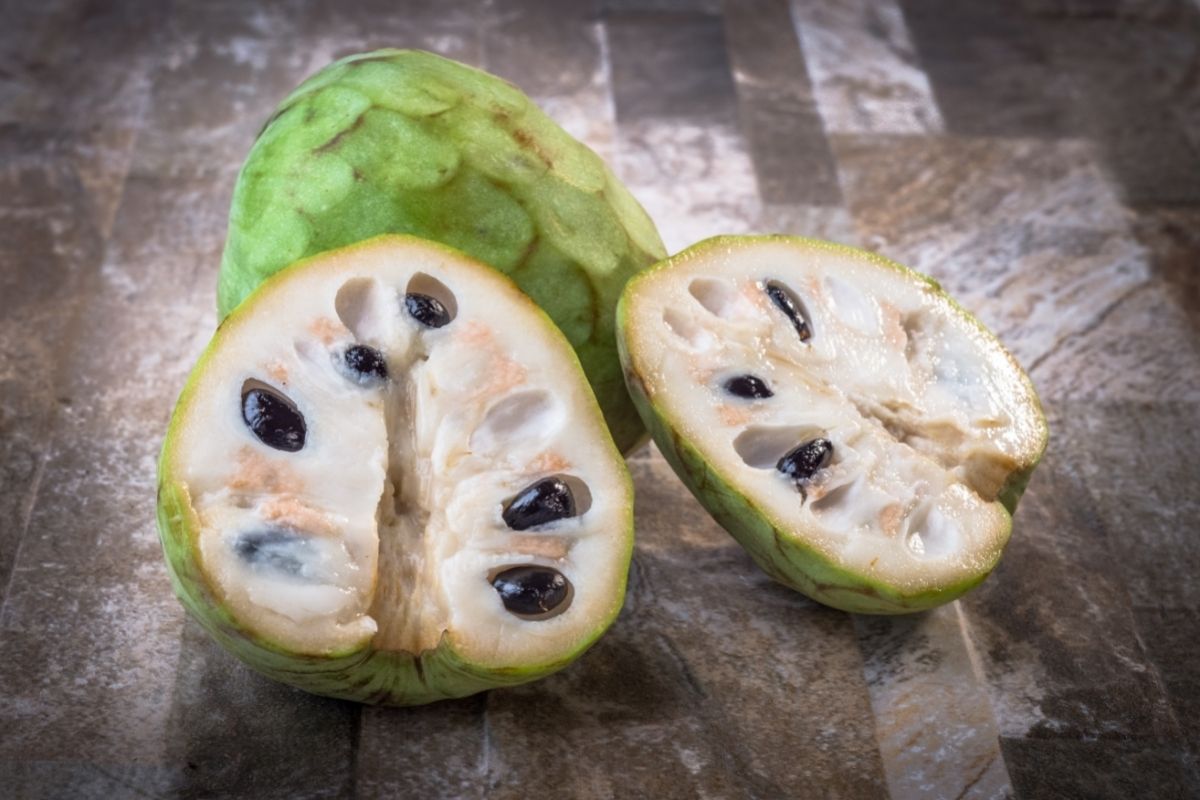
The cherimoya fruit is also known as the custard apple due to its distinct white creamy texture. The white flesh of the fruit contains several black glossy seeds and is covered by green leathery scales. The cherimoya fruit is said to taste somewhat like a pear and papaya with its sweet flavor.
3. Dragon Fruit
Scientifically known as a pitaya, the dragon fruit is characterized as a culmination of several cactus species that are home to the Americas. The dragon fruit is recognized for its distinct deep pink scale leathery skin with prominent green spikes.
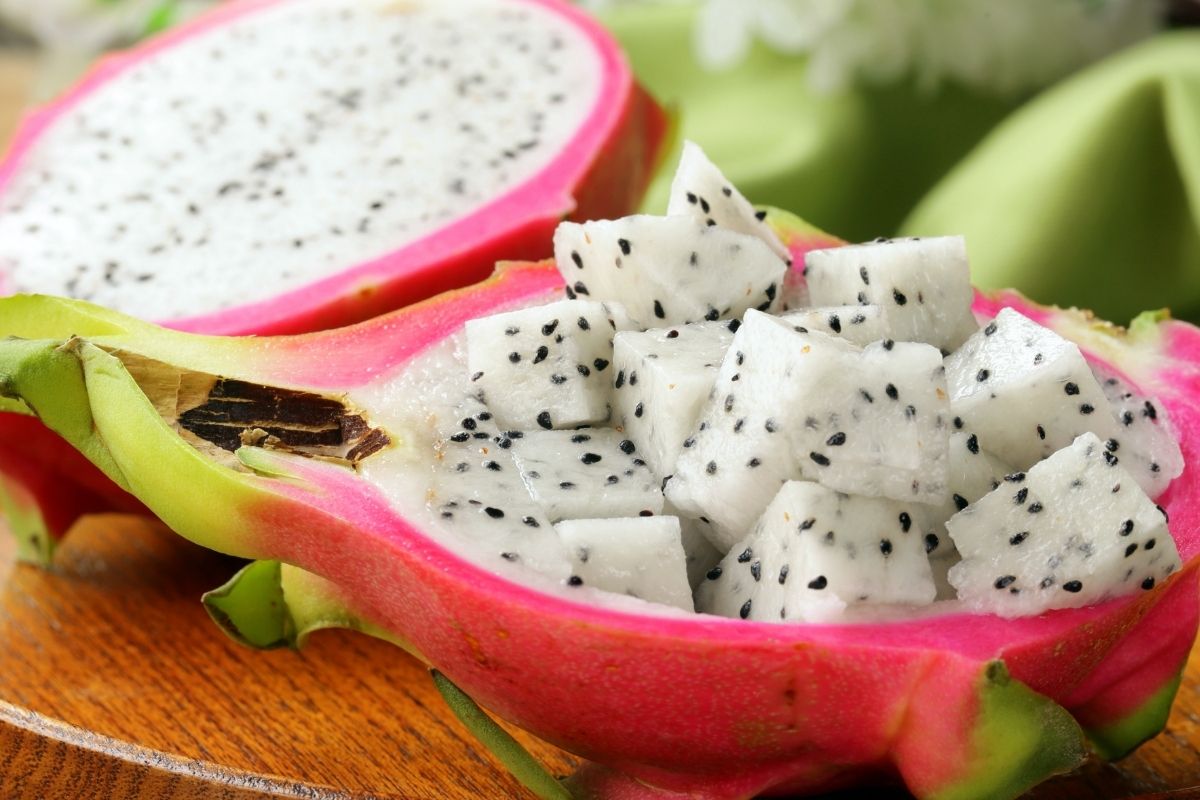
However, the dragon fruit contains a unique white flesh with black poppy-like seeds. The dragon fruit’s white pulp has a strong sour, tart flavor but is juicy and mostly considered to be refreshing with a hint of sweetness.
The dragon fruit is commercially cultivated internationally and can be found in several regions including South America, Asia, the USA, and Australia. The dragon fruit is known to thrive in subtropical climates.
4. Lychee
The lychee fruit is characterized as a member of the soapberry family which includes several species that can be found growing in tropical regions. The lychee fruit is one of the most common white fruits.
The lychee fruit consists of a dark-pink rough rind and a grape-like white flesh that contains a single seed. The lychee fruit is much loved for its tropical sweet and slightly sour flavor.
It is widely commercially cultivated and can be found across the globe, but can be found growing in the wilderness in several regions including southern China, Vietnam, and Cambodia.
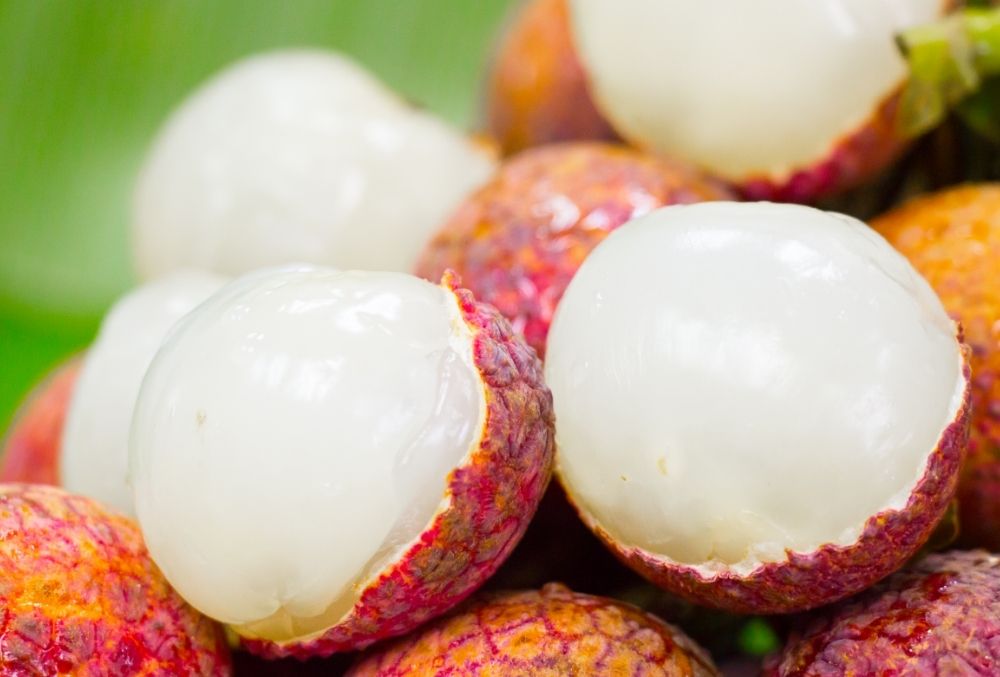
5. Noni Fruit
Noni fruit comes from the Morinda citrifolia tree. The fruit-bearing tree is classified as a member of the coffee family and is native to several regions across the world including Southeast Asia and Australasia.
The noni fruit is also known as the cheese fruit and contains a white center. Berries are often associated with producing a sweet and slightly sour flavor like raspberry or blackberry.
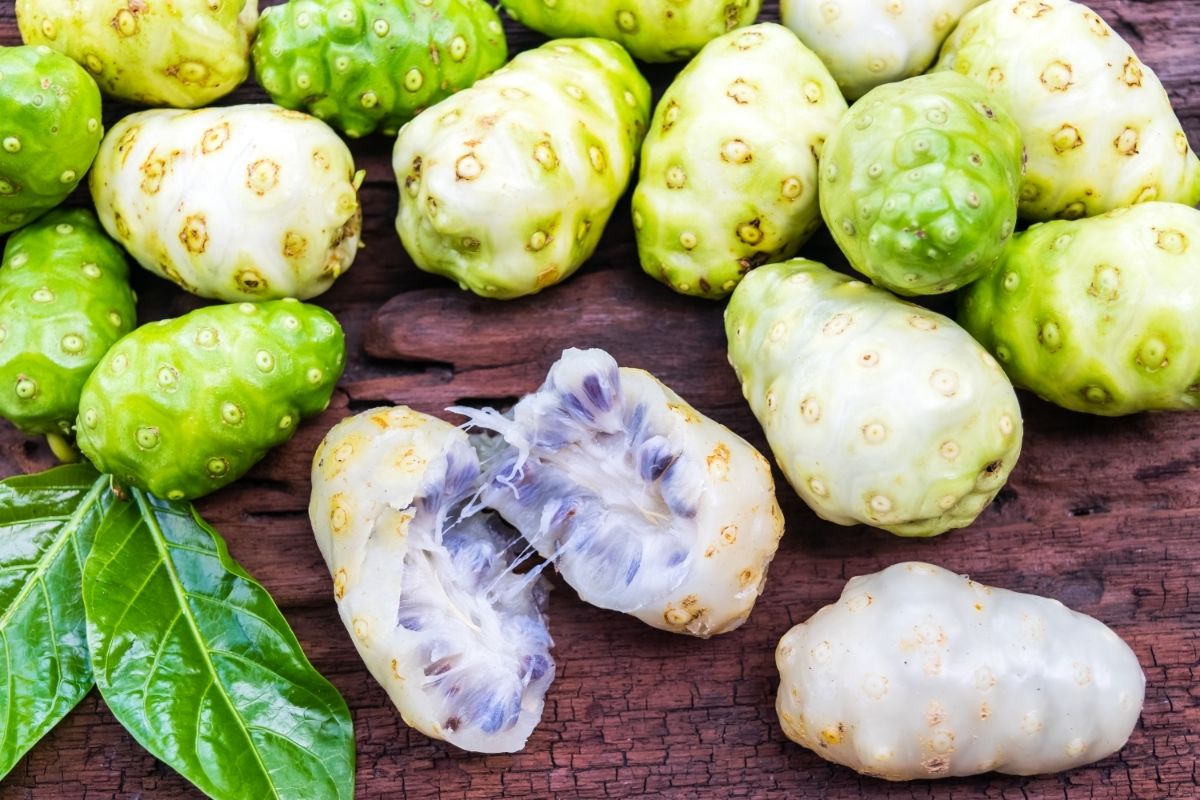
However, the noni fruit is known for its strong and unpleasant odor that can be compared to the smell of cheese or even vomit. The noni fruit, though known for its unpleasant smell, is widely used for culinary and medicinal purposes due to its nutrient-rich properties.
6. Soursop
The soursop fruit comes from the Annona muricata tree which is native to several tropical regions but most commonly found in the Americas and the Caribbean.
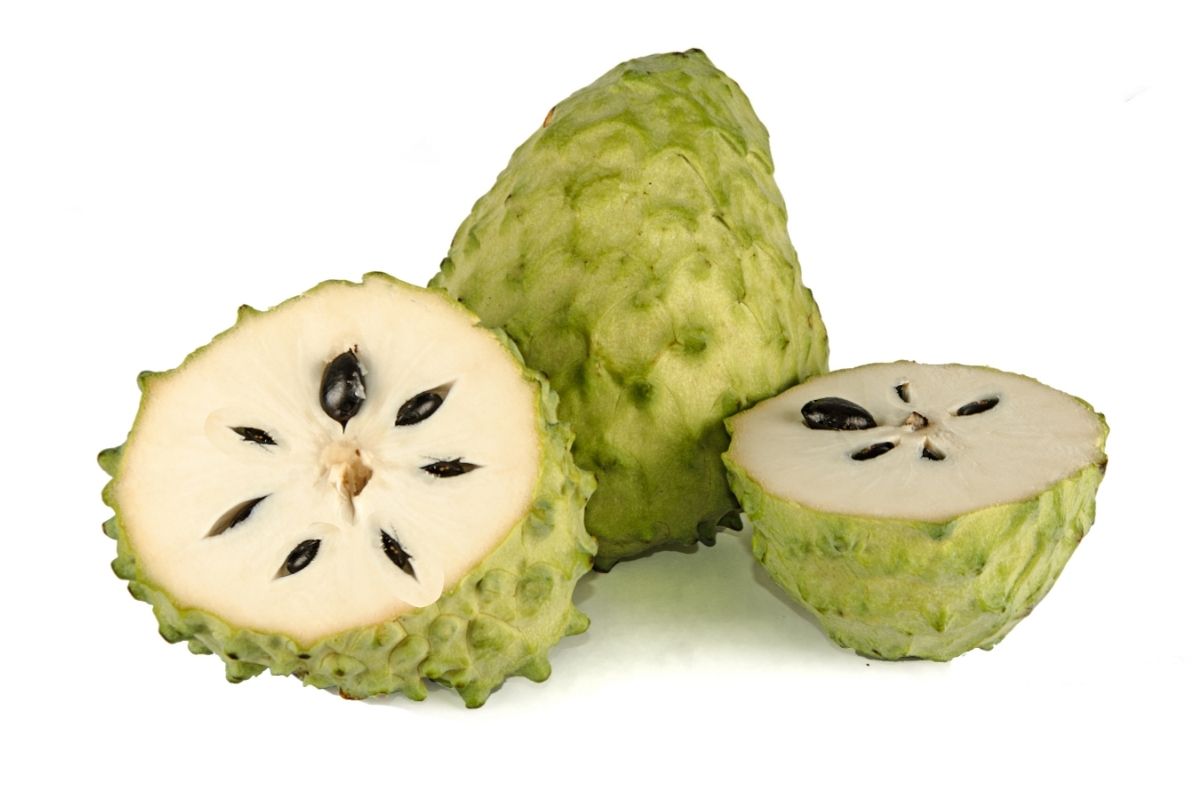
The soursop fruit possesses a distinct appearance of a leathery green spiked exterior and a white flesh. This fruit produces a sweet tropical scent like a pineapple and is said to have a sweet flavor with distinct citrus notes, and a creamy texture.
The soursop fruit is widely recognized across tropical regions as a commonly used fruit that is used both for consumption and medicinal purposes.
7. Mangosteen
The mangosteen is an edible gem-like fruit. The fruit is recognized by its thick purple rind and sweet and juicy white pulp. Though the rind of the fruit is inedible, the pulp of the fruit is widely enjoyed.

The mangosteen fruit is native to several tropical regions but can mostly be found in Southeast Asia. The mangosteen fruit stands to be a highly nutritious fruit that contains a host of unique antioxidants.
8. White-fleshed Guava
There are several varieties of guava, most consisting of a pink flesh. However, the white-fleshed guava features a distinct white flesh that looks like the inside of an apple.
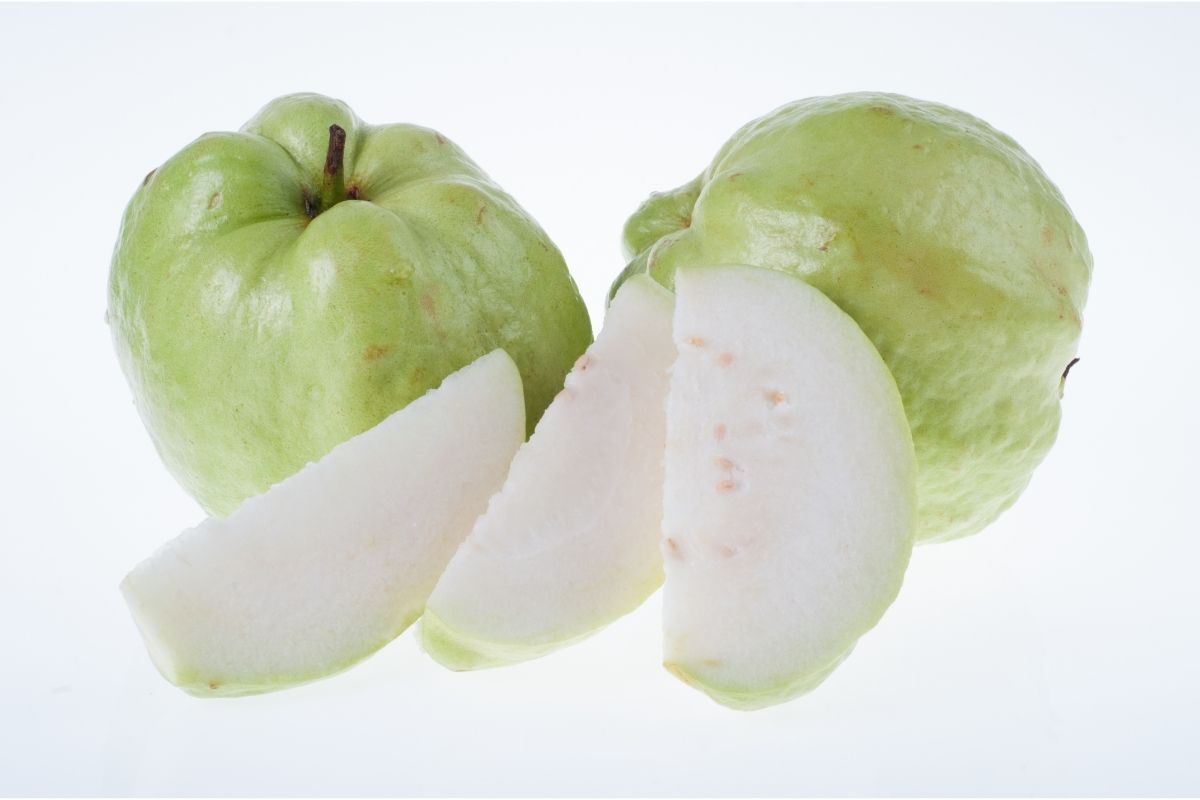
The white-fleshed guava is native to the Caribbean, America, and Mexico. Like the pink guava, the white-fleshed guava thrives in tropical regions.
What distinguishes the white-fleshed guava from the pink-fleshed guava is that it contains very few carotenoids which is why the flesh of the guava is white as the carotenoids give the pink guava its color.
9. White Mulberry
The white mulberry, also known as the silkworm mulberry, is a fruit that is most commonly cultivated to feed silkworms to make silk. However, the white mulberry is also used for culinary purposes due to its sweet and slightly tart flavor.
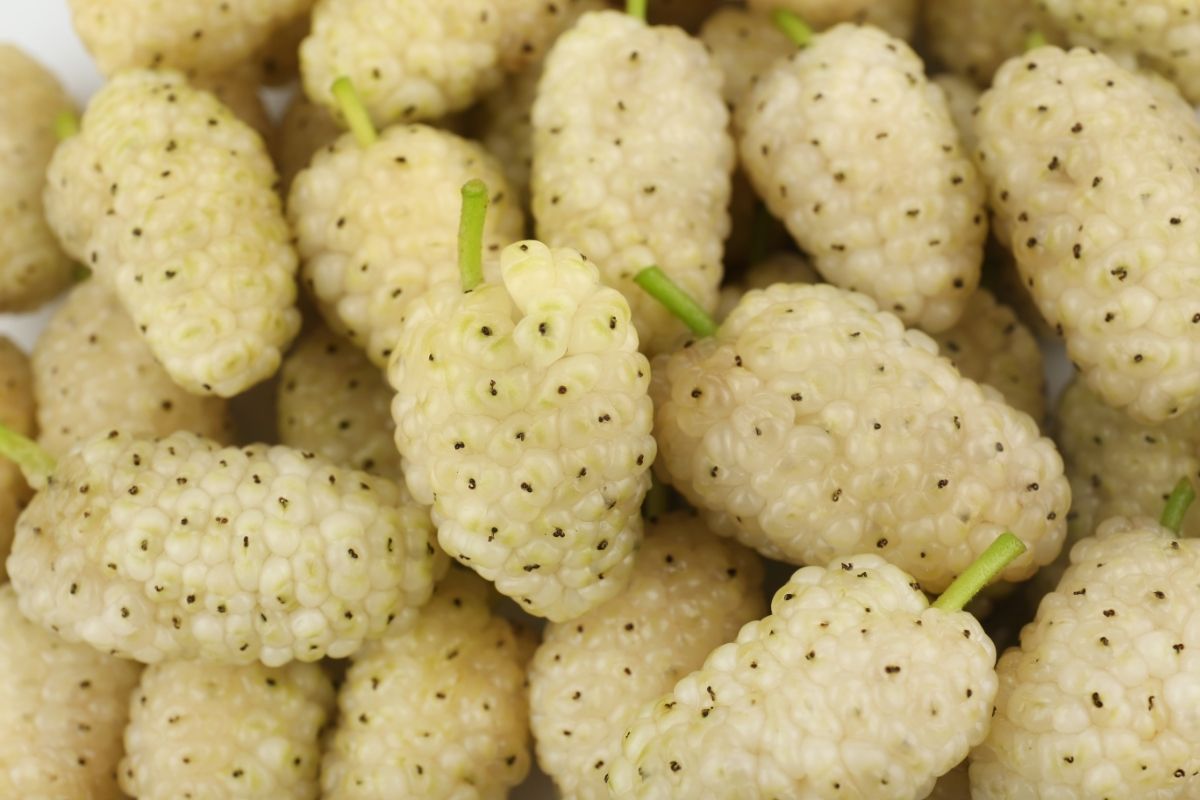
The fruit is said to hold great nutritional value and can commonly be found in extract form. Mulberries can be found in a range of colors varying from red to black, but what’s distinctive about the white mulberry is its unique white appearance.
RELATED: 19 Different Types Of Mulberry Trees (With Pictures)
10. Baobab Fruit
The baobab tree, native to regions across Africa and Australia is recognized for producing unique fruit. Unlike fruits we’re familiar with, such as berries and melons… the baobab fruit differs in that it is not juicy and instead contains seeds that are coated in a dry sour and citrus tasting pulp.
Its outer shell is known for being incredibly hardy as it doesn’t crack easily. Hence, getting to the pulp can be difficult. The pulp of the baobab fruit is widely used for culinary purposes and therapeutic purposes as you can often find it in supplement form as it is nutrient-rich.

11. White Transparent Apple
Commonly known as the white transparent, this variety of apple is recognized for its distinct white-translucent flesh which is considered to be hard but quite juicy.
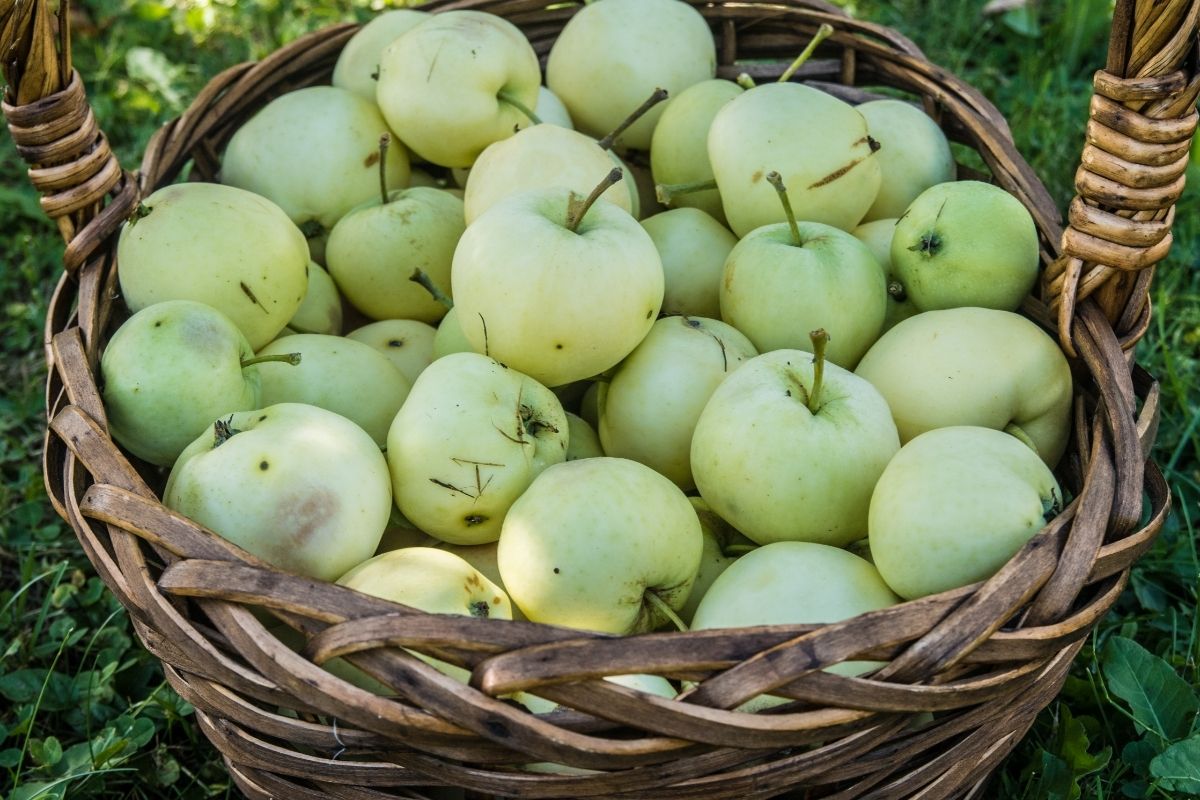
This cultivated apple can be recognized by its lime green skin and white, somewhat coarse flesh. The fruit is often used for culinary purposes as a cooking apple as it produces a strong sharp taste.
Though originating from Europe, the white transparent apple is widely cultivated in Russia and Sweden.
12. Chinese White Pear
The Chinese white pear is classified as a hybrid fruit. The fruit was cultivated in China and is widely consumed as a popular fruit. The delicate pear consists of a round shape and is often referred to as the ‘duck pear.’
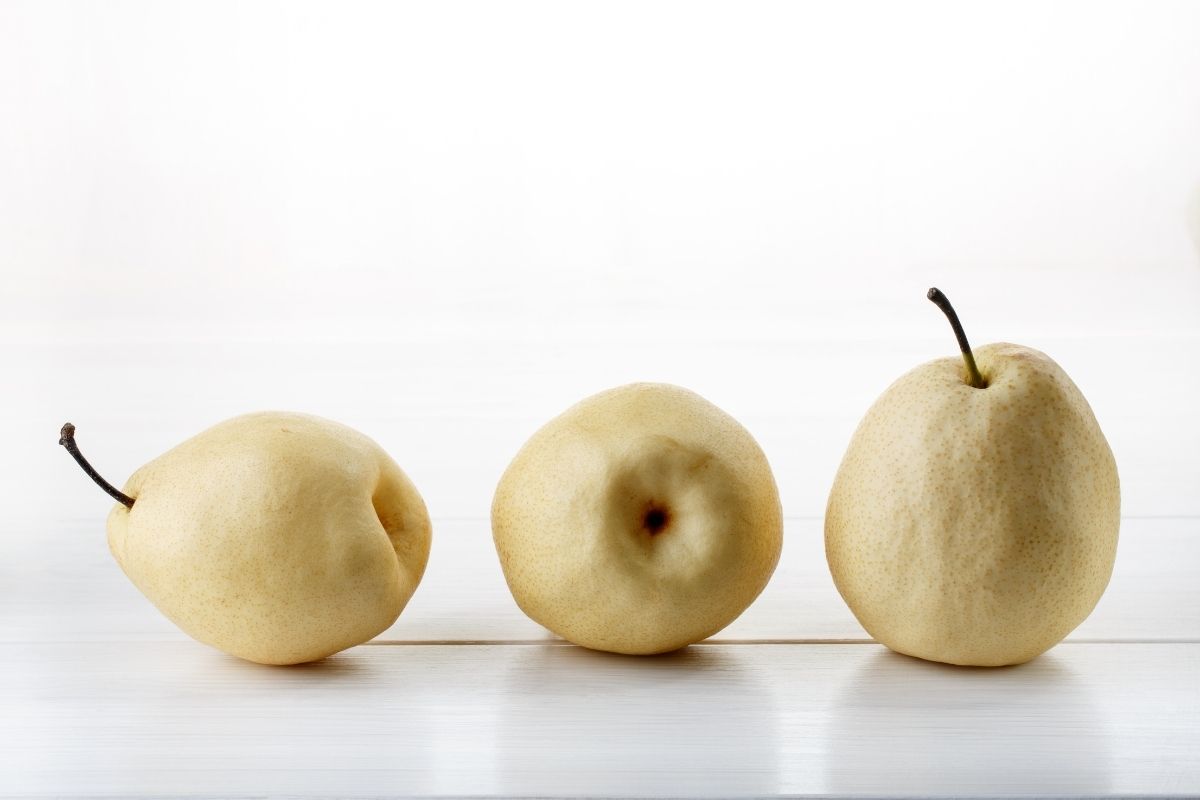
The pear is recognized for its bright white pulp and its sweet floral flavor. The flesh is considered to be quite crispy but equally juicy and is classified as consisting of a very low sugar content and a high water content.
13. Banana
Bananas are one of the most popular white fruits. Though not white on the outside, banana flesh is recognized by its white/ cream, soft texture.
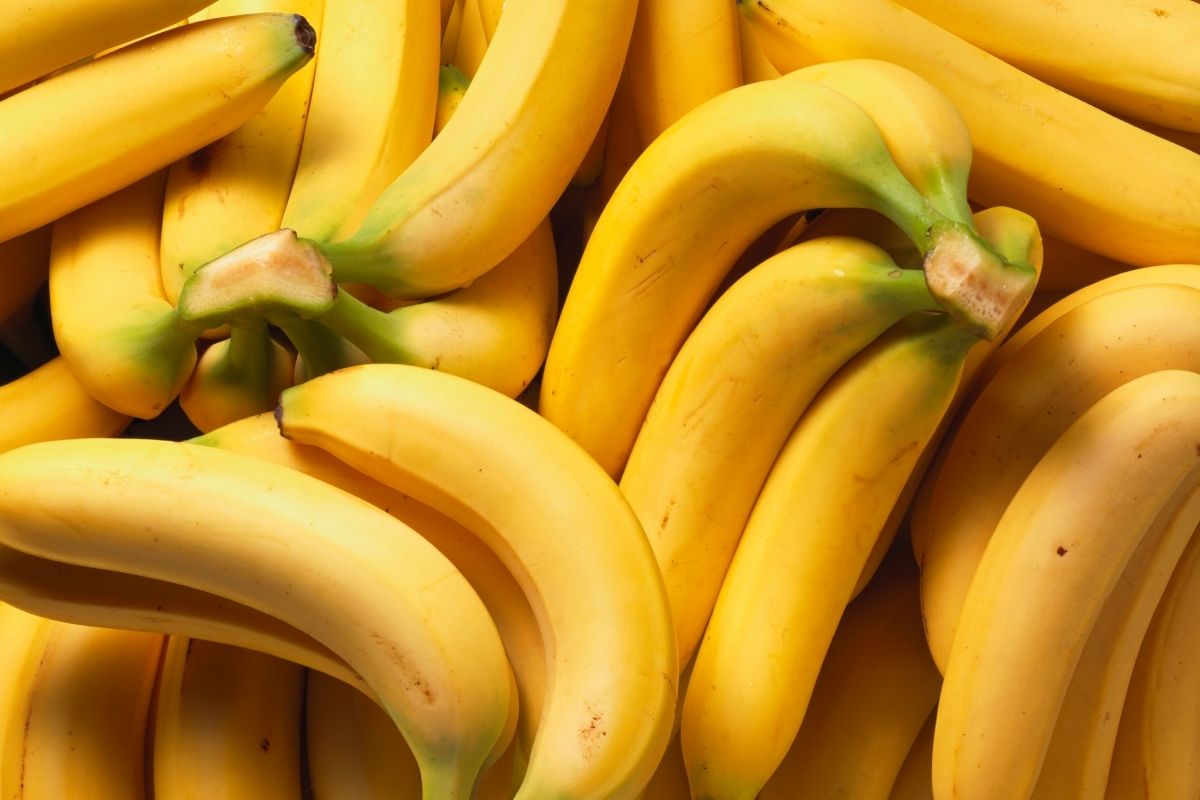
The rind of the banana is often associated with being yellow, however, it can be found in several colors including green, purple and brown. Yet, its flesh is always white due to its high starch content.
RELATED: How to Grow Bananas From Seeds? We Have All The Answers For You
14. White Wonder Watermelon
The white wonder watermelon is distinct in its appearance.
Oddly misconceiving, the white wonder watermelon looks just like a watermelon from the outside with its thick striped green rind. However, the white wonder watermelon significantly differs from the common watermelon as its flesh is not red but is instead a white-cream color.
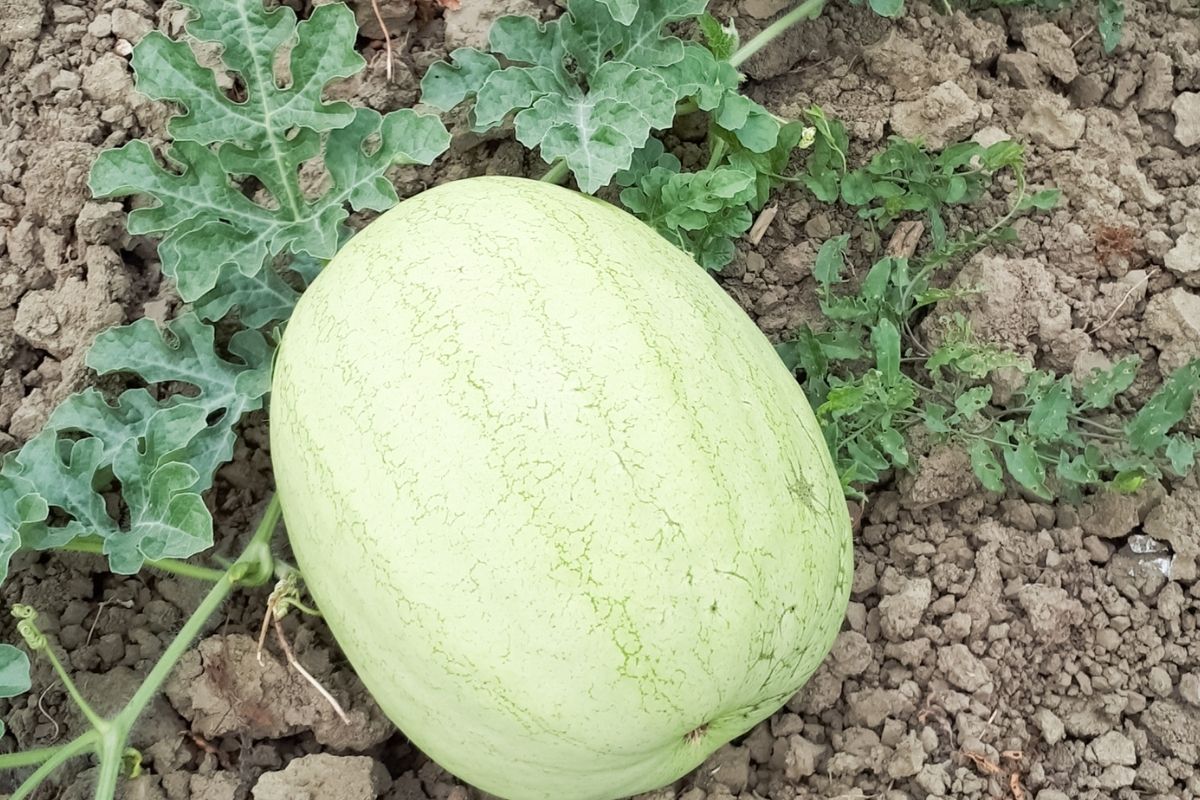
Additionally, the white wonder watermelon also differs in its texture as its flesh is slightly crispier and grainier than the standard watermelon and consists of a milder sweetness with hints of cucumber.
This rare species of watermelon is not commercially cultivated but can be found growing across the African continent.
15. Rambutan
The rambutan fruit is a tropical fruit that can be recognized by its spikey appearance which can be found in a variation of colors from orange to red. The fruit is classified as a seeded drupe and contains a berry-like appearance.
Though featuring the unique external appearance of bright hair-like spines, the flesh of the fruit is equally unique with a white translucent pulp.
The rambutan fruit produces a distinct floral scent and a grape-like flavor. This white fruit can be eaten raw and also cooked. The rambutan fruit thrives in tropical climates and can be found growing in several tropical regions. It is widely cultivated for culinary and ornamental purposes.
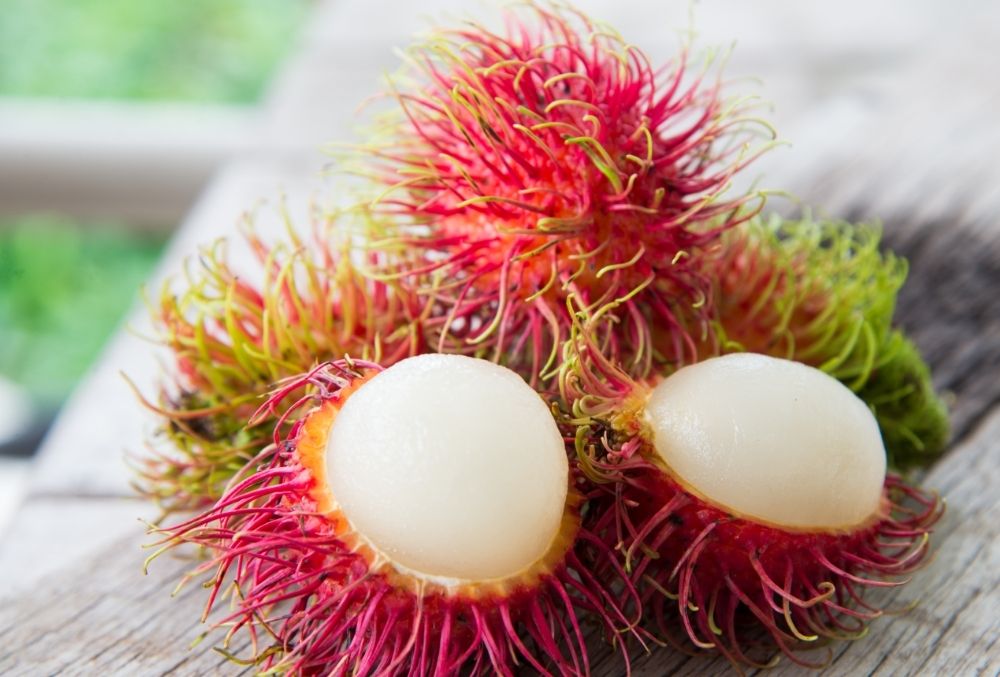
16. White Currant
White currants are classified as a cultivated variety of red currants which is a widely consumed fruit species that is native to Europe.
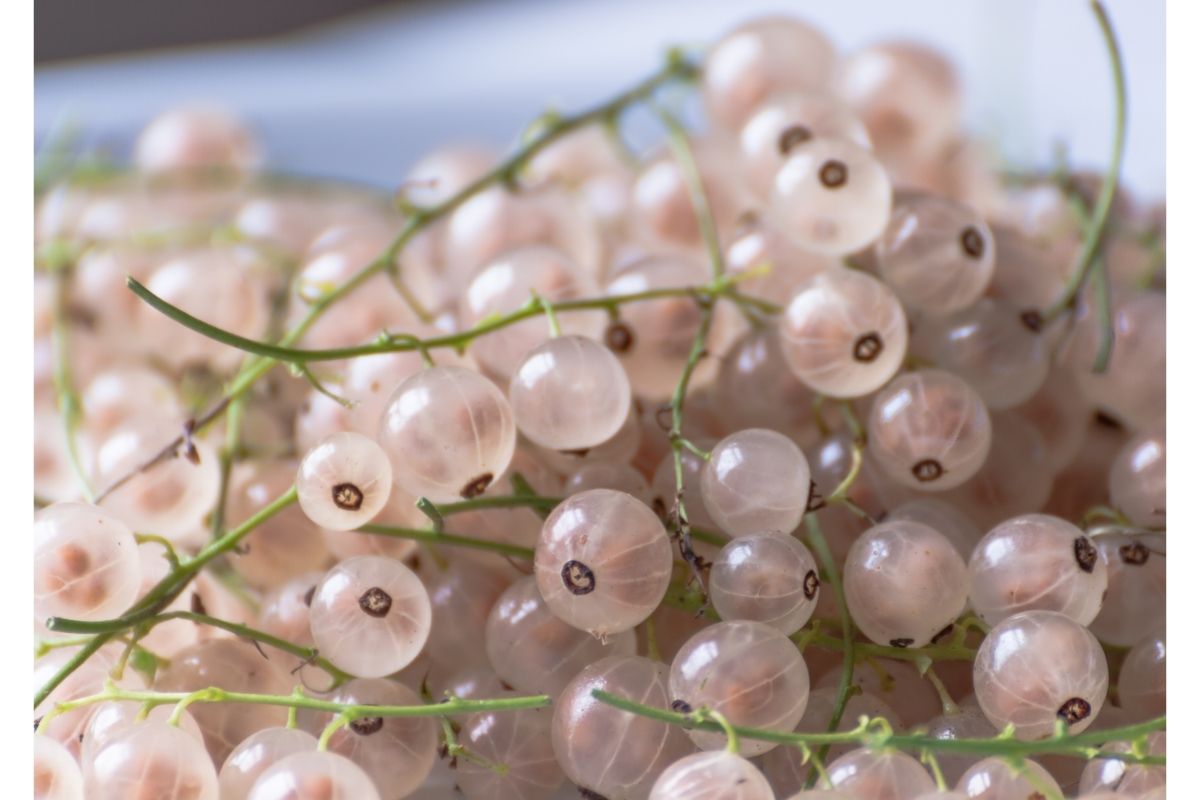
Unlike the red currant, white currants are glossy white berries that produce a slightly sweeter taste than their red relatives. Besides their color and flavor, white currants don’t differ from red currants in any other way as they consist of the same shape and size.
Not only are white currants cultivated for culinary purposes, due to their unique coloring, they are also widely cultivated for ornamental purposes.
Final Thoughts
White fruits shall never again be overlooked! This list just goes to show the expansive variety of paler fruits and all they have to offer.
Not only do they stand to be packed with flavor, but they are also nutrient-rich with many widely cultivated for culinary purposes or used for medicinal purposes.
So, there you have, the ultimate list of some of the most amazing white fruits!
We hope you learned something from this article, here are other articles that you can learn from:
14 Fruits With Seeds (Including Pictures)
Pumpkins: Growth Time and Stages of Development From Seeds To Fruits







